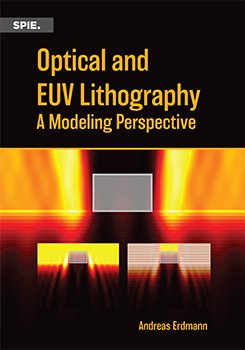|
Chapter 2 described the basics of aerial image formation. More advanced aspects of image formation, including wave aberrations, polarization effects in high-NA systems, and light scattering from topographic features on real masks and wafers, will be discussed in Chapters 8 and 9. The final goal of lithographic patterning, however, is to transfer these images or intensity distributions into micro- or nanostructures composed of distinct materials or into spatially modulated material properties. This is achieved by a lightinduced modification of the solubility of a photoresist in combination with special processing techniques. The nonlinear behavior of photoresist enables the transfer of low-contrast and relatively smooth intensity distributions of images into binary profiles with nearly vertical edges. The basic process flow for the resist patterning was already introduced in Section 1.4. This chapter provides an overview of typical photoresist materials and their modification during various processing steps. This includes the description of physical modeling approaches for the most important types of photoresist. These descriptions will be complemented by an overview of compact models for the photoresist that are used in many applications of computational lithography. The final part of this chapter will compare various aspects of negative- versus positive-tone photoresists and processes. |
|
|


